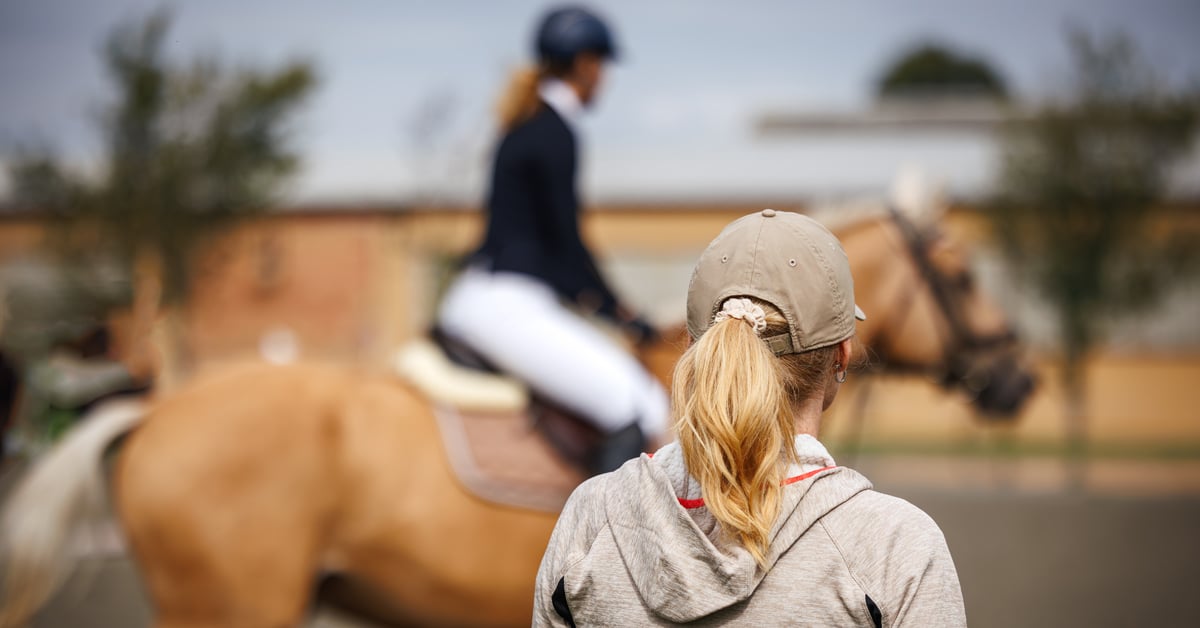First off, my advice to everyone is ‘put them where they belong.’ I’m not talking just about the horse or the rider; I’m talking about that horse with that rider. You can have a 1.40 horse and a 1.10 rider, but you don’t put them in the 1.20 until they are ready.
Second, winning at all costs isn’t always practical. I prefer to win the jump-off by being slick, not crazy. Remember that today sets up tomorrow and next week, and so on so don’t leave everything in the ring today. It’s as simple as trying to strike a balance between being fast and maintaining your horse’s sanity.
With those two pieces of advice in mind, I present 5 tips to help you ride a winning jump-off.
#1) When you walk the course, always walk the jump-off.
I analyze where I want to save time and where to take time. It’s all about analyzing the risks and also capitalizing on your horse’s strengths while protecting his weaknesses. There may be an inside turn or there may be a chance to leave a stride out in a line. Do these challenges suit this particular horse, and what is the key to properly executing it? For example, if you are leaving a stride out on a line, how much pace do I need to jump into the line to make it work?
Also, have back-up plans when you walk the course. For example, if you jumped into the line stuck, don’t even think about leaving the stride out. You jumped the fence before the inside turn out of control, so that inside turn will be ugly; just regroup and go around.
#2) Be efficient in the first half and win it in the second half.
Too much speed early on can risk a rail late. If you’re in the hunt up to the last jump, take a run at it; you only have to worry about the timers after it.
#3) Check for the location of the timers.
How are they set up? It’s possible that riding straight to the first jump or leaving straight after the last jump may not be the fastest route through. This is very common in power and speed classes where the timers can be after the last jump in the power rather than in front of the first jump of the speed phase.
#4) Avoid doing a lead change in the air.
Avoid approaching the first jump in the jump-off and having to change leads in the air. For example, if you’re going left after the first jump, then start on the left lead if possible. If you try to change leads in the arc over the jump, you lose momentum and the shift in balance can cause your horse to have a rail.
#5) Avoid turning in the air
Try to avoid turning in the air over the jump, especially a vertical. Horses tend to forget their back end in this situation, especially if you have more pace. If I want to turn immediately after a jump, I would prefer to angle the jump on the approach rather than turn in the air.
Say I want to go left after a jump: I simply approach the jump like I’m going to jump the right standard and about two strides out shift left and jump the middle of the fence. This can be very effective coming out of a line. I recommend practicing all these exercises at home before you try them in the ring!
Now you’ve made the jump-off and you’re first to go. Be efficient and leave the jumps up ‒ and let the rest of the field chase you. You’re last to go and you’ve watched the rider with the leading time. You know what you have to do and you don’t have to win it by five seconds, you just have to nip the leading time and leave the jumps up.
Be careful, though, if you are watching other rounds. If they did something different than you had planned, don’t necessarily change your plan. You know what your horse is capable of, so stick to it. The leader may have left two strides out of a line, but that horse may have a completely different stride than your horse, so stick to your plan and catch up somewhere else on course.
The Latest











